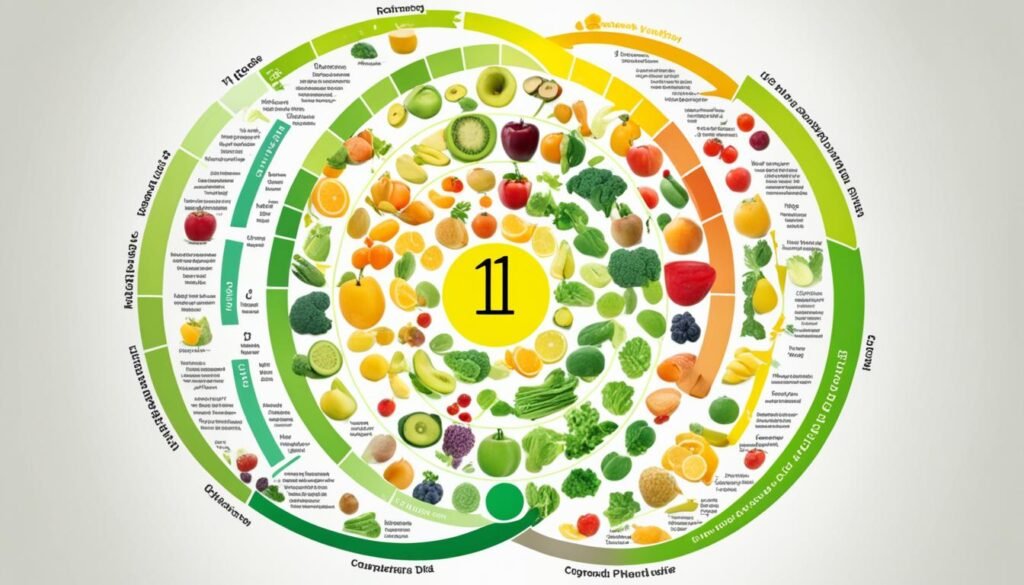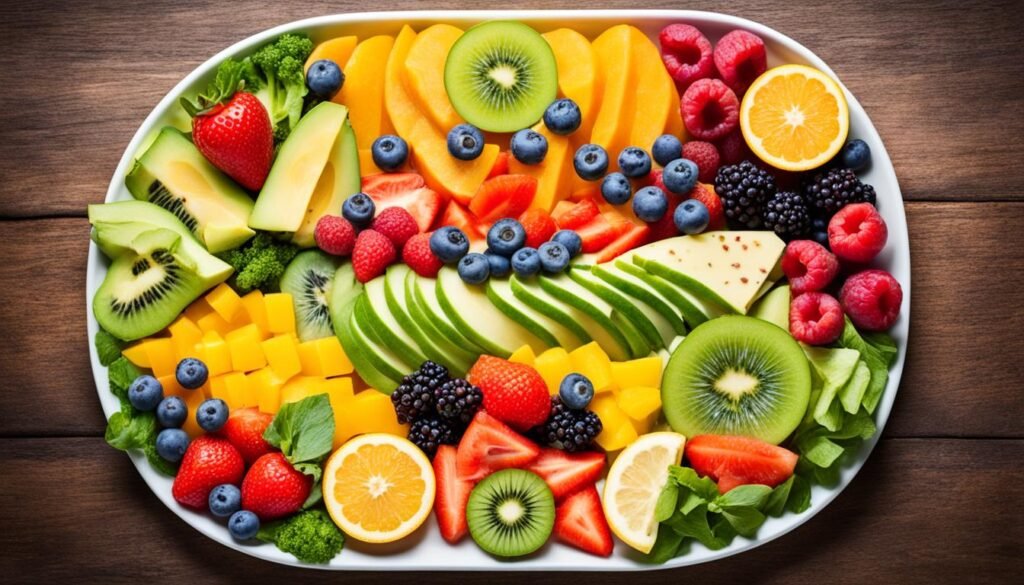What is 11 diet?
Weight loss is on many people’s minds, including mine. There are so many diets out there, all claiming to be life-changing. The 11 Diet is one such program that has caught my attention. It promises a path to a healthier and more confident self, but the journey through different diets can leave you confused. Today, let’s explore something new – the 11 Diet.
The 11 Diet is unique, utilizing fasting and cycling calories to shed fat and keep muscles strong. By controlling when you eat and when you don’t, it pushes your body into a state called ketosis. In ketosis, your body turns to fat, not carbs, for its energy. It starts with eating very few calories, from 400 to 600 per day, then slowly adding more as you go.
Meal replacements like shakes, soups, and bars are a big part of the 11 Diet plan. They are made to help you eat fewer calories, making weight loss happen fast. The idea is to swap regular meals for these special options. This method aims to make losing weight more straightforward by giving you a clear plan to follow.
Key Takeaways
- The 11 Diet is a fasting and calorie cycling approach designed for fat loss and muscle mass preservation.
- It involves significant calorie reduction, starting at 400-600 calories per day, and gradually increasing over time.
- The diet utilizes meal replacement products such as shakes, soups, and bars to create a calorie deficit and support rapid weight loss.
- The 11 Diet aims to induce a metabolic state called ketosis, where the body burns fat for fuel instead of carbohydrates.
- Consulting with a healthcare professional is recommended before starting the 11 Diet to ensure it is a safe and appropriate approach for your individual health and weight loss goals.
Understanding the 11 Diet
The 11 Diet helps people lose weight fast through calorie-controlled eating. It uses meal replacement products. This diet is modeled after the Cambridge Diet or 1:1 Diet. They are both very low-calorie diets (VLCDs) that swap all regular meals for controlled shakes, soups, and bars.
In the beginning, the 11 Diet only lets you eat these meal replacement items. This creates a big shortfall in calories. Then, you slowly add regular foods back as the diet goes on.
A Calorie-Controlled Approach
The 11 Diet relies heavily on controlling calorie intake to lose weight quickly. By limiting your daily calories, it aims to make your body use stored fat for energy. This technique mirrors the success seen with the Cambridge Diet and the 1:1 Diet.
These very low-calorie approaches have shown they can lead to big weight loss in a short time.
Rapid Weight Loss Through Meal Replacements
The 11 Diet features various meal replacement items like shakes, soups, and bars. These items assist in keeping a healthy calorie deficit for weight loss. They are carefully portioned and full of vital nutrients.
Using these meal replacements can help you stick to the diet’s strict calorie rules. This often leads to losing weight quicker than with traditional ways of dieting.
How the 11 Diet Works
The 11 Diet aims for weight loss by greatly reducing calories. It pushes the body into ketosis, a state where it uses fat for energy. This forces fat burning and helps with weight loss.
Significant Calorie Reduction
The diet starts with a very low-calorie phase, only about 400-600 calories daily. This low intake stresses the body. It makes the body use its stored fat for energy, not carbs.
Inducing Ketosis for Fat Burning
The 11 Diet works by cutting out carbs. This makes the body enter ketosis. In ketosis, the body changes from using sugar to using fat for fuel. This leads to more fat burning and quick weight loss. As the diet continues, daily calories go up a bit. But the diet still includes cycling calories and fasting to keep the fat loss going.
What You Can Eat on the 11 Diet
The 11 Diet helps you transition from a strict diet to a more balanced life in six stages. It focuses on using meal replacement products like shakes, soups, and bars. These items fill you up and keep your calories low.
The Six Stages of the Diet
This diet plan has six steps to lose weight fast and keep it off. At first, you only eat the diet’s meal replacement products. This phase is very low in calories. Later stages add more regular food, helping you build a long-term healthy eating plan.
Meal Replacement Products and Recipes
11 diet recipes rely on the diet’s special meal replacements. They’re designed to control calories and provide balanced nutrition. These options create a major calorie deficit while meeting your body’s needs. As you progress, you can include more everyday foods while sticking to the diet’s core ideas.
Following the 11 Diet
The 11 Diet kicks off with a strict 12-week phase. During this time, people only eat the diet’s specific products. Their daily intake is limited to 400-600 calories. This part of the diet jumpstarts quick weight loss.
The Initial 12-Week Low-Calorie Phase
In the first phase, dieters consume items like shakes, soups, and bars. These are from the 11 Diet’s lineup. By eating very few calories, they enter ketosis. This means their bodies start using up stored fat instead of carbs. The main aim here is to shed a lot of weight early on. Doing so gets them ready for the next parts of the diet.
Transitioning to More Flexibility
After those first 12 weeks, the diet gets more varied. Dieters start eating regular foods again. They slowly increase their calories. But the habits of cycling calories and fasting stay. This approach is meant to be more doable over the long haul. It helps avoid gaining the weight back that can come from drastic dieting.

The Evidence Behind the 11 Diet
The 11 Diet draws from the Cambridge Diet, part of a big study on diabetes prevention. Research shows very low-calorie diets like the 11 Diet might help manage type 2 diabetes. But, its long-term effectiveness and safety isn’t fully studied.
Consulting a doctor before trying the 11 Diet is crucial. It might quickly shed pounds, but its lasting effects and possible risks are important to think about.
| Study | Findings | Implications |
|---|---|---|
| Cambridge Diet (1:1 Diet) Diabetes Prevention Study | Participants who followed a very low-calorie diet (similar to the 11 Diet) experienced significant improvements in type 2 diabetes management. | This suggests that the calorie-restricted and fasting-based approach of the 11 Diet may have potential benefits for individuals with type 2 diabetes. |
| Short-Term Effects of Very Low-Calorie Diets on Metabolism and Body Composition | Research has shown that very low-calorie diets can lead to rapid weight loss and changes in body composition, including the preservation of muscle mass. | The 11 Diet’s focus on calorie cycling and meal replacements may help achieve similar outcomes, though long-term data is still limited. |
What is 11 Diet?
The 11 Diet helps you lose fat while keeping your muscles strong. It focuses on when you eat and when you don’t. By doing this, your body enters ketosis, a state where it burns fat, not carbs, for energy. You start by eating only 400-600 calories a day, then slowly eat more over time.
The Fasting and Calorie Cycling Approach
This method is all about losing fat but keeping your muscles. You time your meals and fasting periods to enter ketosis. This makes your body use fat as its main energy source, not carbs.
Promoting Fat Loss While Preserving Muscle Mass
The 11 Diet helps you cut down on fat-rich diets slowly. This helps keep your muscles strong. The special mix of fasting and calorie changes is the key to losing fat while not losing muscle.

Potential Drawbacks and Risks
The 11 Diet can make you lose weight fast. But, there are some risks and downsides too. Eating very few calories in the beginning can cause a lack of nutrients. This leads to feeling tired, not going to the bathroom often, and having headaches.
Nutrient Deficiencies and Side Effects
Eating so few calories, especially at the start, can be bad for you. Your body might not get enough vitamins and minerals it needs. This can make you feel weak, lose hair, and have tummy troubles like not being able to go.
Unsustainability and Rebound Weight Gain
The 11 Diet might not be something you can do for a long time because it’s so strict. When you stop, you could quickly gain the weight back. This can make losing weight hard and lead to a cycle of trying different diets over and over.
Before trying the 11 Diet, talk to a doctor or a nutrition expert. Make sure it’s safe and right for you. Consider the possible bad effects and if the diet matches what you want and need.
Conclusion
The 11 Diet is a plan that cycles fasting and calories. It aims to burn fat but keep muscle. You start by eating only 400-600 calories a day.
Then, you slowly eat more in different stages. This diet uses special foods to help you eat fewer calories and lose weight faster.
The 11 Diet can help you lose weight quickly. But, it may not be good for everyone. It could lead to missing important nutrients, side effects, and might be hard to keep up.
Before trying the 11 Diet, talk to a doctor. They can check if it’s safe and right for you. They can also help with your personal health and weight goals.
Summing up, the 11 Diet uses fasting and changing calories for weight loss. But, think about the good and bad points first. With a doctor’s help, you can see if it fits your goals and likes.






